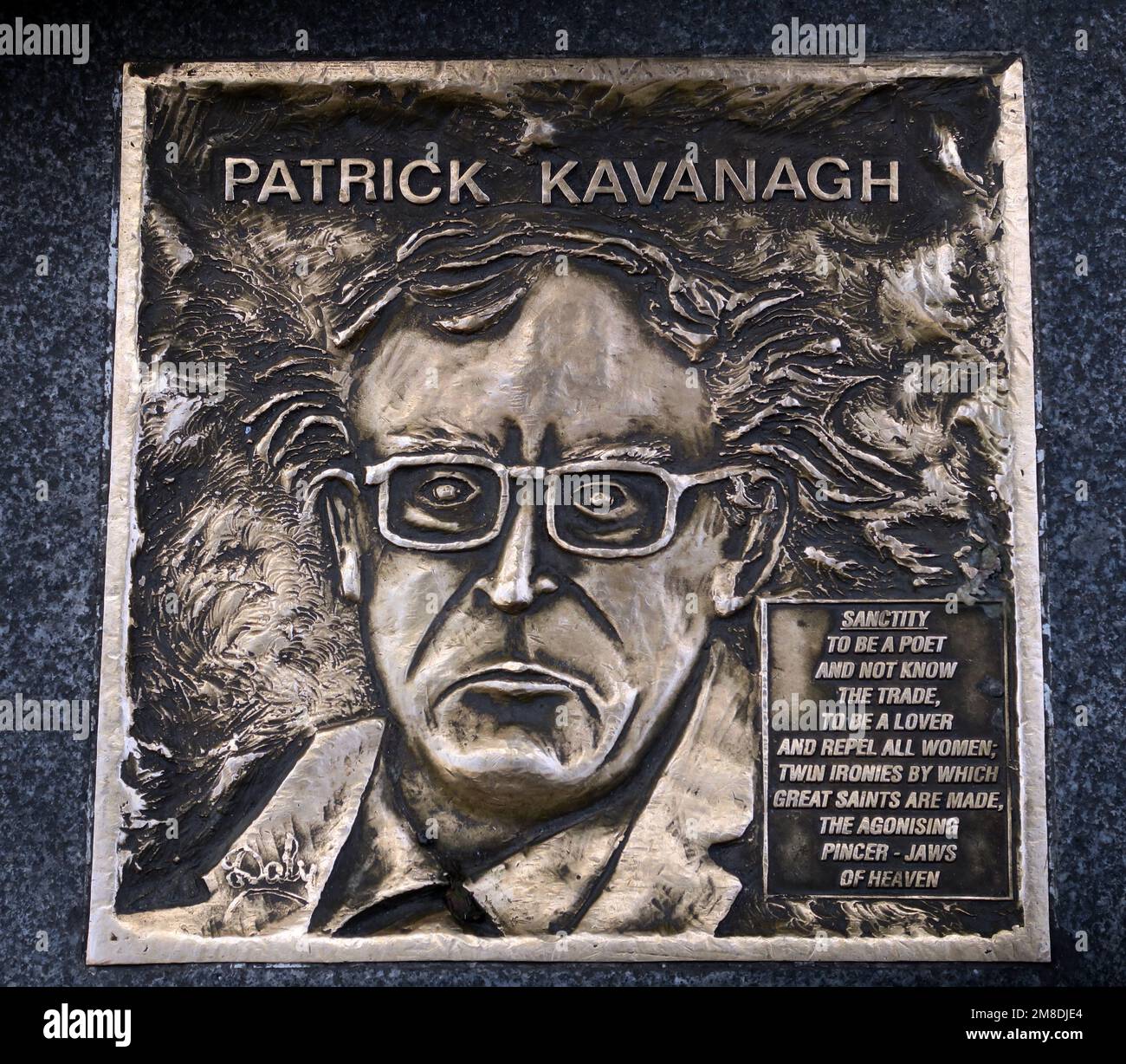Pavement bronze plaque of Patrick Kavanagh Poet, Fleet St, Temple Bar, Dublin 2, D02 NX25, Eire, Ireland

Image details
Contributor:
Tony Smith / Alamy Stock PhotoImage ID:
2M8DJE4File size:
43.5 MB (2.5 MB Compressed download)Releases:
Model - no | Property - noDo I need a release?Dimensions:
4164 x 3648 px | 35.3 x 30.9 cm | 13.9 x 12.2 inches | 300dpiDate taken:
11 September 2019Location:
Fleet St, Temple Bar, Dublin 2, D02 NX25, Eire, IrelandMore information:
Patrick Kavanagh (21 October 1904 – 30 November 1967) was an Irish poet and novelist. His best-known works include the novel Tarry Flynn, and the poems "On Raglan Road" and "The Great Hunger". He is known for his accounts of Irish life through reference to the everyday and commonplace Patrick Kavanagh was born in rural Inniskeen, County Monaghan, in 1904, the fourth of ten children of James Kavanagh and Bridget Quinn Kavanagh's first published work appeared in 1928[7] in the Dundalk Democrat and the Irish Independent. Kavanagh had encountered a copy of the Irish Statesman, edited by George William Russell, who published under the pen name AE and was a leader of the Irish Literary Revival. Russell at first rejected Kavanagh's work but encouraged him to keep submitting, and he went on to publish verse by Kavanagh in 1929 and 1930. This inspired the farmer to leave home and attempt to further his aspirations. In 1931, he walked 80 miles (abt. 129 kilometres) to meet Russell in Dublin, where Kavanagh's brother was a teacher. Russell gave Kavanagh books, among them works by Fyodor Dostoyevsky, Victor Hugo, Walt Whitman, Ralph Waldo Emerson and Robert Browning, and became Kavanagh's literary adviser. Kavanagh joined Dundalk Library and the first book he borrowed was The Waste Land by T. S. Eliot. Kavanagh's first collection, Ploughman and Other Poems, was published in 1936. It is notable for its realistic portrayal of Irish country life, free of the romantic sentiment often seen at the time in rural poems, a trait he abhorred. Published by Macmillan in its series on new poets, the book expressed a commitment to colloquial speech and the unvarnished lives of real people, which made him unpopular with the literary establishment. Two years after his first collection was published he had yet to make a significant impression. The Times Literary Supplement described him as "a young Irish poet of promise rather than of achievement"